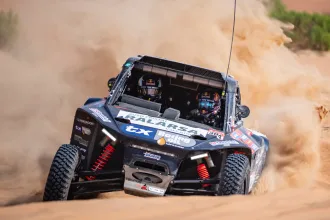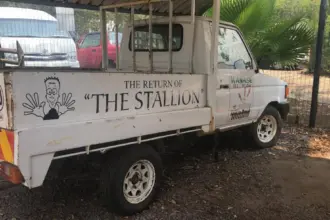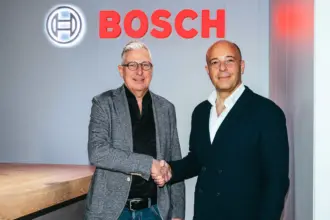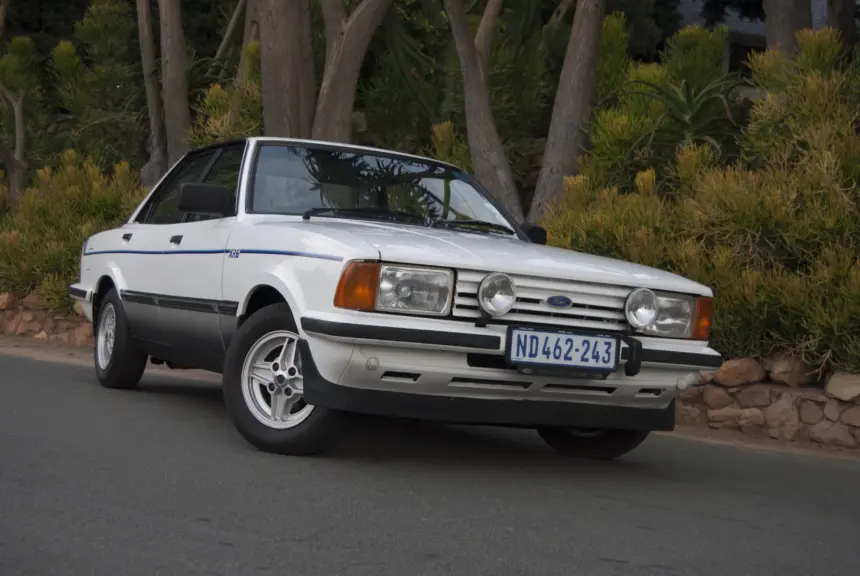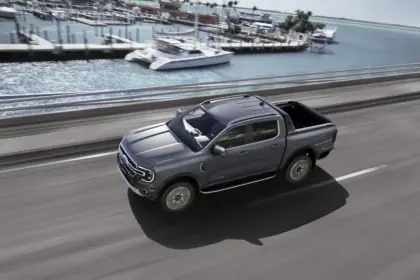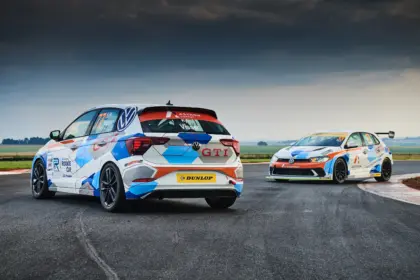By Stuart Johnston
- Mark I Cortina launched in late 1962, powered by a 1.2-litre engine and had a top speed of 125km/h
- The Cortina GT had lowered suspension, a rev counter, a short stubby gear lever and disc brakes up front
- Famous South African tuner Basil Green launched an inspired V6 version of the car in 1968 by transplanting the 3.0-litre V6 engine from the Zodiac into the Mk II body
- Five generations of Cortina produced in South Africa between 1962 and 1983 with more than 303 000 units sold
Ford’s Cortina was a car that redefined the boundaries between small and medium-sized cars that existed until that time. When the Mark I version launched in late 1962 it had a 1.2-litre engine, a unit that would normally be associated with a light car. And yet the performance on offer was close to the levels of the medium-sized cars of that era, and the same had to be said for the packaging of the bodywork.
The first Cortina was a genuine four/five-seater, but with a boot that was cavernous in comparison to anything else in its class. Straight away, customers who would have looked at the larger models on offer, with bigger engines and correspondingly higher prices, were prepared to give the new Cortina a once-over, and assess whether its performance could live up to expectations of a medium-sized car.
And by and large, it did. Its top speed of about 125 km/h was more than adequate for a 1200cc in those days, and ditto for the acceleration of 0-100 km/h in less than 20 seconds. What’s more, Ford had a roll-out of models lined up for 1963 and ’64 that would make the Cortina not only acceptable, but shape-shift the way enthusiasts perceived the Ford brand.
Following hot on the heels of the 1200 models were the 1500 variants in station wagon and sedan format for more lugging power. Then, in late 1963 came the car that became an instant icon – the Cortina GT. It had lowered suspension, a rev counter, a short stubby gear lever and disc brakes up front. Most important was the 1.5-litre engine with a Weber carburettor, branch manifold, higher compression, slightly wilder camshaft, and some extra trim, topped off, of course, by those GT badges….
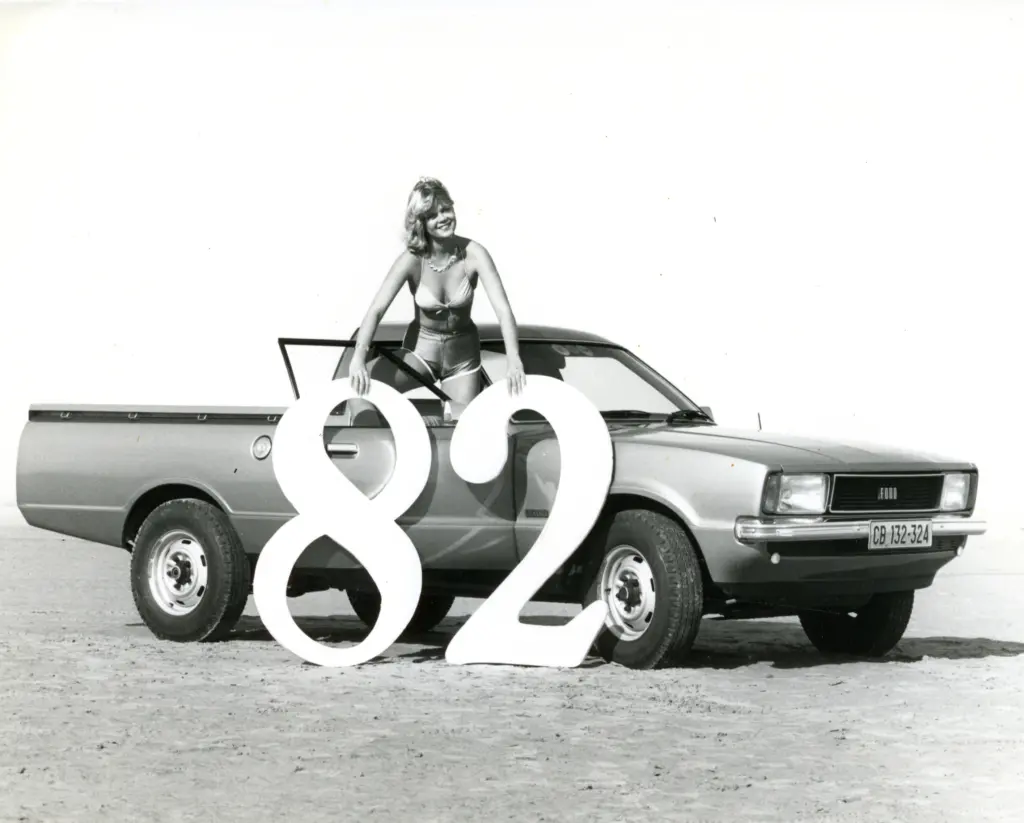
The correspondence pages in Car Magazine in 1964 and 1965 were rife with controversy about Ford using the hallowed Gran Turismo suffix which, until that time, had been the province of exotics like Ferraris, Maseratis, Aston Martins and the like. But what the stodgy old purists failed to grasp was that, at the stroke of a few upper-case letters, Ford had made it ultra-cool to own a mass-produced light car that could deliver excitement on a day-to-day basis, at an affordable price.
Not content with the 61 kW GT version, Ford then launched the Lotus Cortina, developed by Formula One guru Colin Chapman, which re-wrote race records all over the planet. The Cortina’s launch had happily coincided with Ford’s worldwide marketing campaign known as Total Performance, and this meant entering motorsport events in categories ranging from saloon car championships to rallying, the Le Mans 24-Hour and the Indianapolis 500.
Unfortunately, ordinary South Africans never had the privilege of being offered the specialised 78kW twincam Lotus Cortina here for sale. But Ford South Africa imported a handful of examples for our top two saloon car aces at the time, Basil van Rooyen and Koos Swanepoel, to contest the newly instated South African Saloon Car Championship in 1964.
Swanepoel, a humble mechanic from Cape Town, duly won the SA championship and in late ’64 he found himself involved in snowball fights with the great Jim Clark at the ski resort in Cortina, Italy, the town that the little Ford was named after. Drivers from all over the world who had won a championship in a Ford Cortina were invited to the celebration, and Clark was one of those, having taken time off from his Lotus F1 duties to win the 1964 British Saloon Car Championship in a Lotus Cortina.
The global motorsport programme that underpinned the Cortina’s appeal as a practical car brought huge publicity to the Cortina, and indeed, to Ford as a global brand. In the mid-1960s the Cortina had become South Africa’s top-selling car and in its first four years sold 60 000 units. In early 1967 the Mk II version was introduced with a total re-style, and again it achieved great sales success. In this rendition, which was in fact slightly shorter but with a wider track, it received the famous Kent crossflow four-cylinder engine, which would have a lifespan of well over two decades and power many thousands of racing cars and sports car specials in all parts of the world.
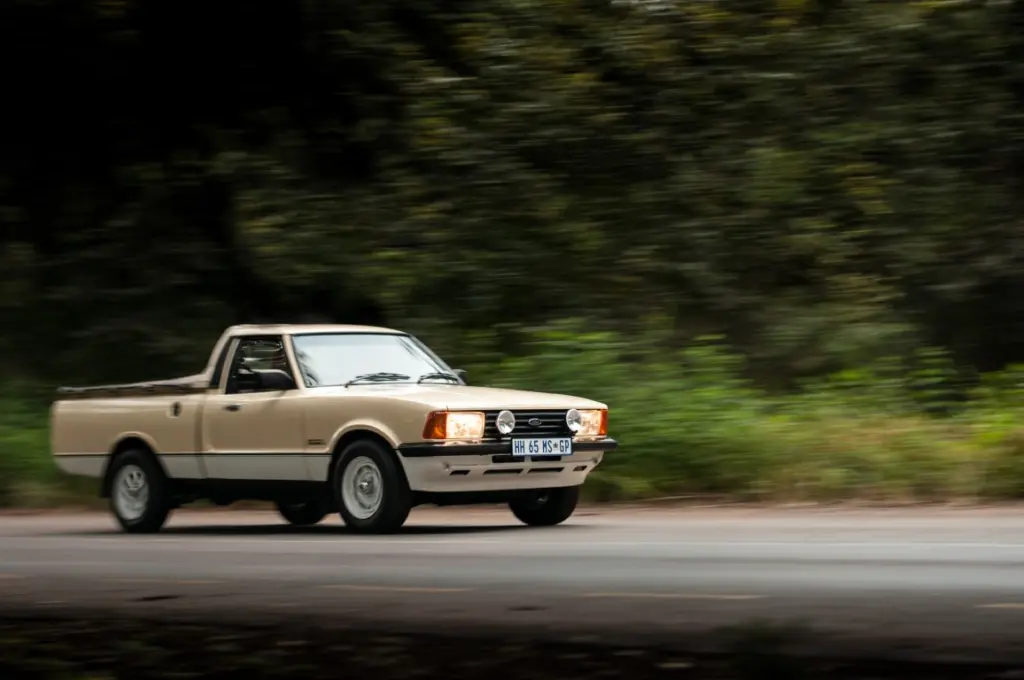
Famous South African tuner Basil Green launched an inspired V6 version of the car in 1968 by transplanting the 3.0-litre V6 engine from the Zodiac into the Mk II body, and famously adding Rostyle wheels and a racing stripe that wrapped itself around the nose section of the Cortina. This was the launch of the famous Perana brand that would see it revered as a global icon a few years later, when Green went one better and transplanted a Mustang 5.0-litre V8 into a Ford Capri body shell.
The Mk II Cortina was undoubtedly better equipped and more sophisticated than the original Mk I Cortina. But the Mk III version which debuted in 1971 was probably the biggest evolutionary step in the Cortina’s history. What had begun as a light car with medium-car benefits was now very much a mid-sized contender and, what’s more, its sexy new Coke-bottle shape was given added sophistication, not least by the addition of a German-developed single overhead camshaft (“SOHC”) engine in the top GT model.
The new Mk III’s launch in South Africa had been delayed by strikes in the UK, which prevented certain components from reaching here, and because of this, the Cortina had slipped out of the top three on the sales list. But the Mk III sorted that problem out as soon as it came on full stream.
During its third-gen model life, the top GT model underwent a significant change. The SOHC two-litre motor was quietly dropped from the range and in its place was the much more potent Ford Essex V6 engine, previously developed for the larger Zephyr/Zodiac range, which by the early ‘70s had been phased out. Initially this engine was introduced as a 2.5-litre option, but the GT model was given the full beans treatment with the 3.0-litre unit which was rated at 100 kW – a huge jump from the four-cylinder GT models available until that time.
With the better aerodynamics of the new body shape, the top speed of the mighty V6 Mk III Cortina GT was recorded by Car Magazine at an impressive 180 km/h. This was the dawn of the famous “Big Six” Cortina era, which defined this car as a serious performance contender throughout the rest of its lifespan. During this time the base model Cortina still used the famous Kent 1600 four-cylinder engine introduced in the Mk II, and these entry models had solid performance credentials too, for the family man or woman who wanted a strong, no-nonsense midfield performer. Another engine option was the two-litre V4, but it never enjoyed much popularity.
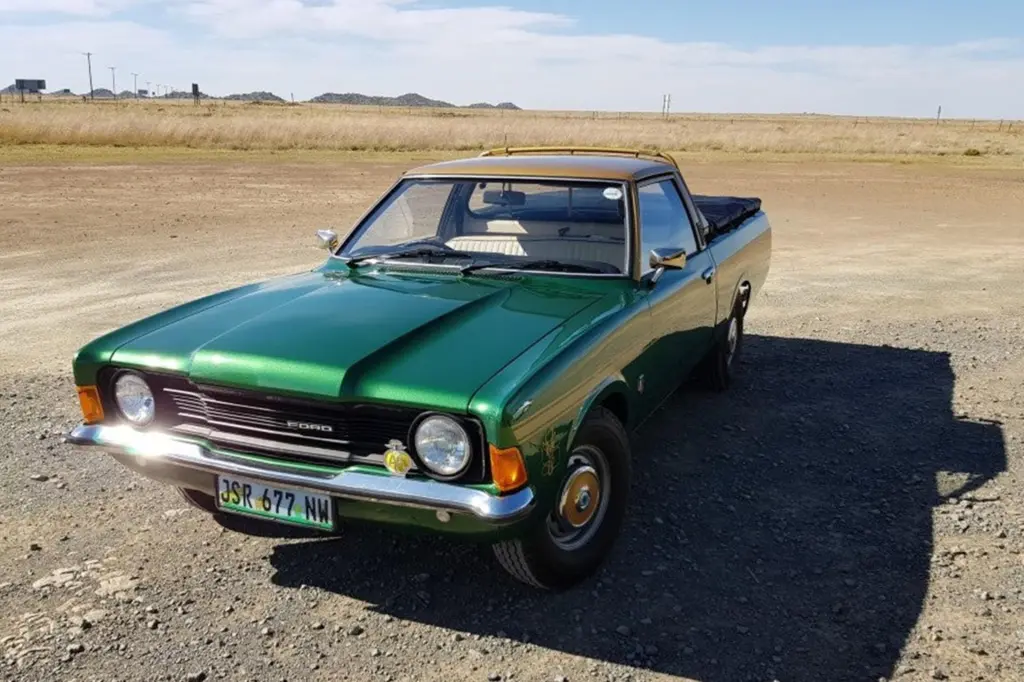
Also at this time, the Cortina bakkie was introduced, with 1.6 four-cylinder and 2.5-litre V6 engines. This was an amazingly successful vehicle that, due to top sales figures, would be manufactured long after the final version of the Cortina sedan was produced. What’s more, the pick-up was a unique, wholly South African design, and so well thought-of that it was exported to the UK!
The Mk IV Cortina was introduced in May 1977 and by now the styling typified the knife-edge creases that were so popular in the late 1970s. The Mk IV had an increased glass area, plush interior and an engine range that once again included the two-litre SOHC engine as a midrange model option. The 3.0-litre V6 models were given upmarket nomenclature like “XLE” and “Ghia” and the front suspension retained the double-wishbone system introduced on the Mk III version to replace the MacPherson strut design of the first two generation Cortinas. An identifying styling feature of the Mk IV models was a switch to square-shaped headlights.
Perhaps the most notable achievement of this Mk IV model range was that it had bounced back to again become South Africa’s top-selling car, a position it had not held since 1965. It should be noted that in the late ‘70s South Africans were still very much affected by the fuel crises of late 1973 and many had made a switch to much smaller cars. Accordingly, the top-selling sales figures were a huge endorsement of the medium-sized Mk IV’s excellent design and specification.
The final Mk V Cortina was introduced in 1980 and was pretty much an evolution of the similarly-styled Mk IV. Beneath the skin, Ford South Africa was very proud of its new five-link rear suspension that, again, was developed in Port Elizabeth.
The top model in the range introduced the evocative XR6 name into the Cortina lexicon, essentially the GT replacement model. The XR6 had exotic Scheel rally-style bucket seats, pressed-steel wheels with a special “mag-style” pattern, spoilers and side stripes. Essentially it was the same Big Six Cortina beneath the skin, and no-one seemed to care very much that its V6 engine had been around in the same basic form for nearly a quarter of a century!
For hard-core enthusiasts, who had been mesmerised by the first Cortina GT, the crowning glory for the Cortina range in South Africa came with a special run of 200 Cortina XR6 Interceptor models. The whole idea was to homologate a model for racing to run at the front of the Group One saloon car racing field. These came standard with three twin-choke Weber carburettors, a hot camshaft, branch exhaust manifolds, uprated suspension, and special alloy wheels. The Interceptors were painted a brash red and raced to winning effect in the Group One category against BMW 528s, by the likes of Sarel van der Merwe and Geoff Mortimer.
A lesser-known hot version of the Cortina XR6 at this time was the very rapid X-Ocet, marketed by a Port Elizabeth dealership, Simpson Ford. This car ran a modified 3.0-litre V6 motor topped off by a Holley four-barrel carburettor, and the X-Ocet was at least as quick as the Interceptor, but easier to keep in tune with its single four-barrel carburettor.
By the time Cortina production ended in the third quarter of 1983, with the introduction of the Sierra, more than 303 000 Cortinas had been sold in South Africa since introduction in December 1962. You still see Cortina cars and bakkies running around our roads today, and on the classic car circuit they are much prized as desirable and reliable cars that are easy to keep on the road because of spares availability.
They had a great motorsport legacy that continued right until the final series was built. It is not overstating the case for Cortina that this was the car that cemented the way us South Africans felt about the Ford brand; a car for the people that continued the legacy established by the amazing Ford Model T in our rugged country, over 100 years ago!

